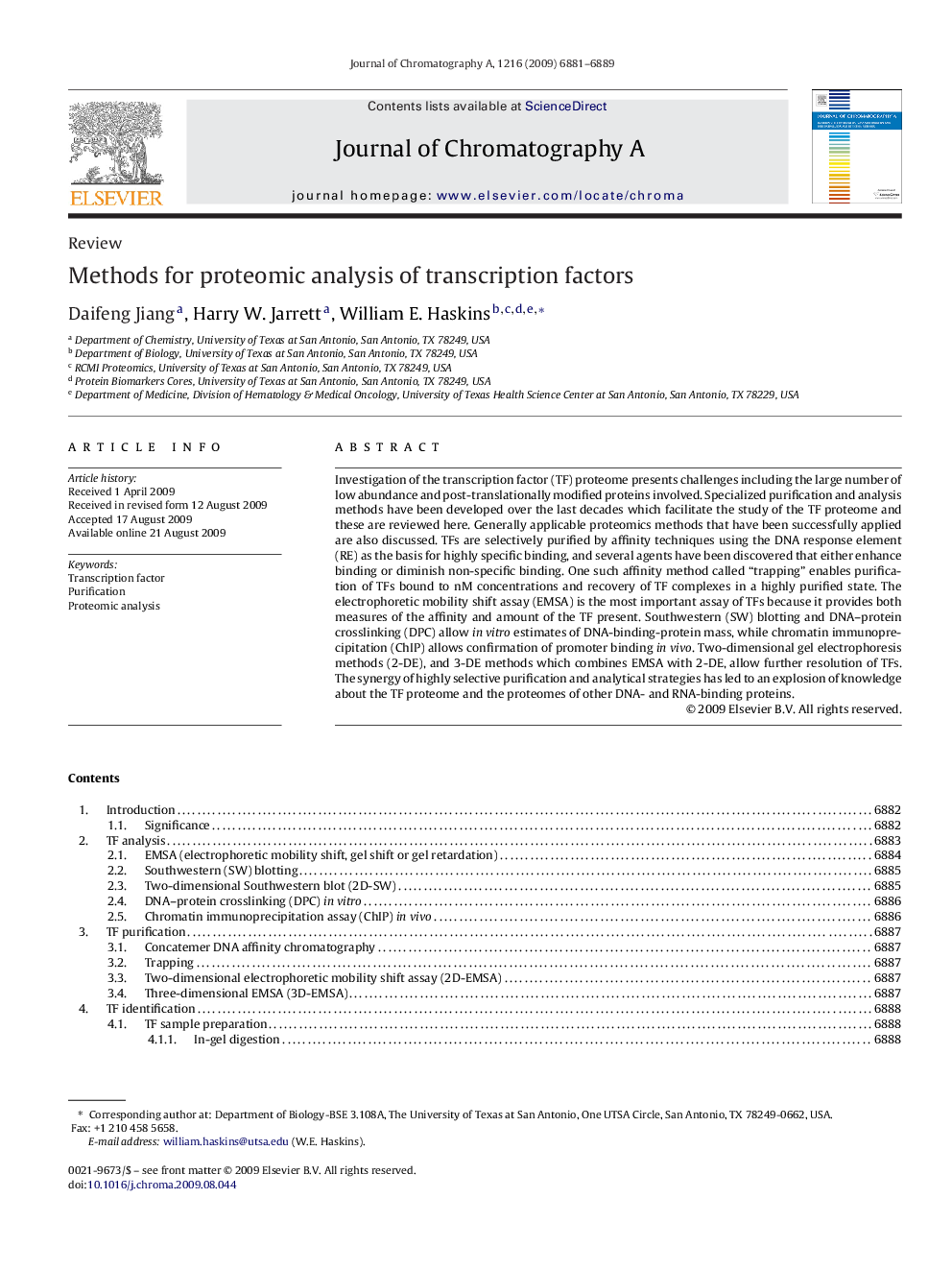| Article ID | Journal | Published Year | Pages | File Type |
|---|---|---|---|---|
| 1204952 | Journal of Chromatography A | 2009 | 9 Pages |
Investigation of the transcription factor (TF) proteome presents challenges including the large number of low abundance and post-translationally modified proteins involved. Specialized purification and analysis methods have been developed over the last decades which facilitate the study of the TF proteome and these are reviewed here. Generally applicable proteomics methods that have been successfully applied are also discussed. TFs are selectively purified by affinity techniques using the DNA response element (RE) as the basis for highly specific binding, and several agents have been discovered that either enhance binding or diminish non-specific binding. One such affinity method called “trapping” enables purification of TFs bound to nM concentrations and recovery of TF complexes in a highly purified state. The electrophoretic mobility shift assay (EMSA) is the most important assay of TFs because it provides both measures of the affinity and amount of the TF present. Southwestern (SW) blotting and DNA–protein crosslinking (DPC) allow in vitro estimates of DNA-binding-protein mass, while chromatin immunoprecipitation (ChIP) allows confirmation of promoter binding in vivo. Two-dimensional gel electrophoresis methods (2-DE), and 3-DE methods which combines EMSA with 2-DE, allow further resolution of TFs. The synergy of highly selective purification and analytical strategies has led to an explosion of knowledge about the TF proteome and the proteomes of other DNA- and RNA-binding proteins.
